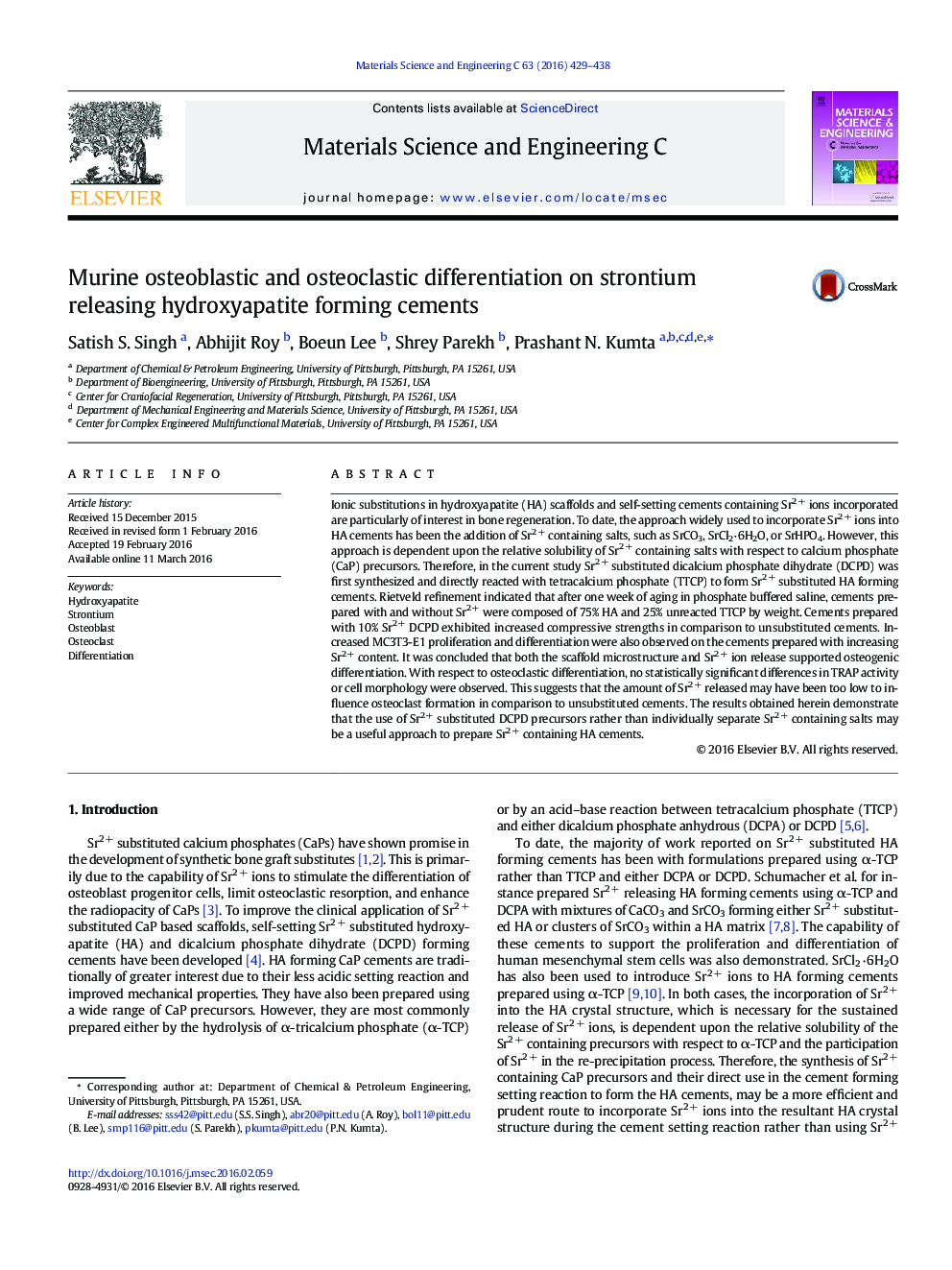| کد مقاله | کد نشریه | سال انتشار | مقاله انگلیسی | نسخه تمام متن |
|---|---|---|---|---|
| 1428035 | 1509158 | 2016 | 10 صفحه PDF | دانلود رایگان |
• Sr2 + containing HA cement was prepared by reacting TTCP with Sr2 + substituted DCPD.
• Cements with increased Sr2 + supported increased osteogenic protein expression.
• The amount of Sr2 + released was insufficient to influence osteoclast activity.
Ionic substitutions in hydroxyapatite (HA) scaffolds and self-setting cements containing Sr2 + ions incorporated are particularly of interest in bone regeneration. To date, the approach widely used to incorporate Sr2 + ions into HA cements has been the addition of Sr2 + containing salts, such as SrCO3, SrCl2 ∙ 6H2O, or SrHPO4. However, this approach is dependent upon the relative solubility of Sr2 + containing salts with respect to calcium phosphate (CaP) precursors. Therefore, in the current study Sr2 + substituted dicalcium phosphate dihydrate (DCPD) was first synthesized and directly reacted with tetracalcium phosphate (TTCP) to form Sr2 + substituted HA forming cements. Rietveld refinement indicated that after one week of aging in phosphate buffered saline, cements prepared with and without Sr2 + were composed of 75% HA and 25% unreacted TTCP by weight. Cements prepared with 10% Sr2 + DCPD exhibited increased compressive strengths in comparison to unsubstituted cements. Increased MC3T3-E1 proliferation and differentiation were also observed on the cements prepared with increasing Sr2 + content. It was concluded that both the scaffold microstructure and Sr2 + ion release supported osteogenic differentiation. With respect to osteoclastic differentiation, no statistically significant differences in TRAP activity or cell morphology were observed. This suggests that the amount of Sr2 + released may have been too low to influence osteoclast formation in comparison to unsubstituted cements. The results obtained herein demonstrate that the use of Sr2 + substituted DCPD precursors rather than individually separate Sr2 + containing salts may be a useful approach to prepare Sr2 + containing HA cements.
Figure optionsDownload as PowerPoint slide
Journal: Materials Science and Engineering: C - Volume 63, 1 June 2016, Pages 429–438
